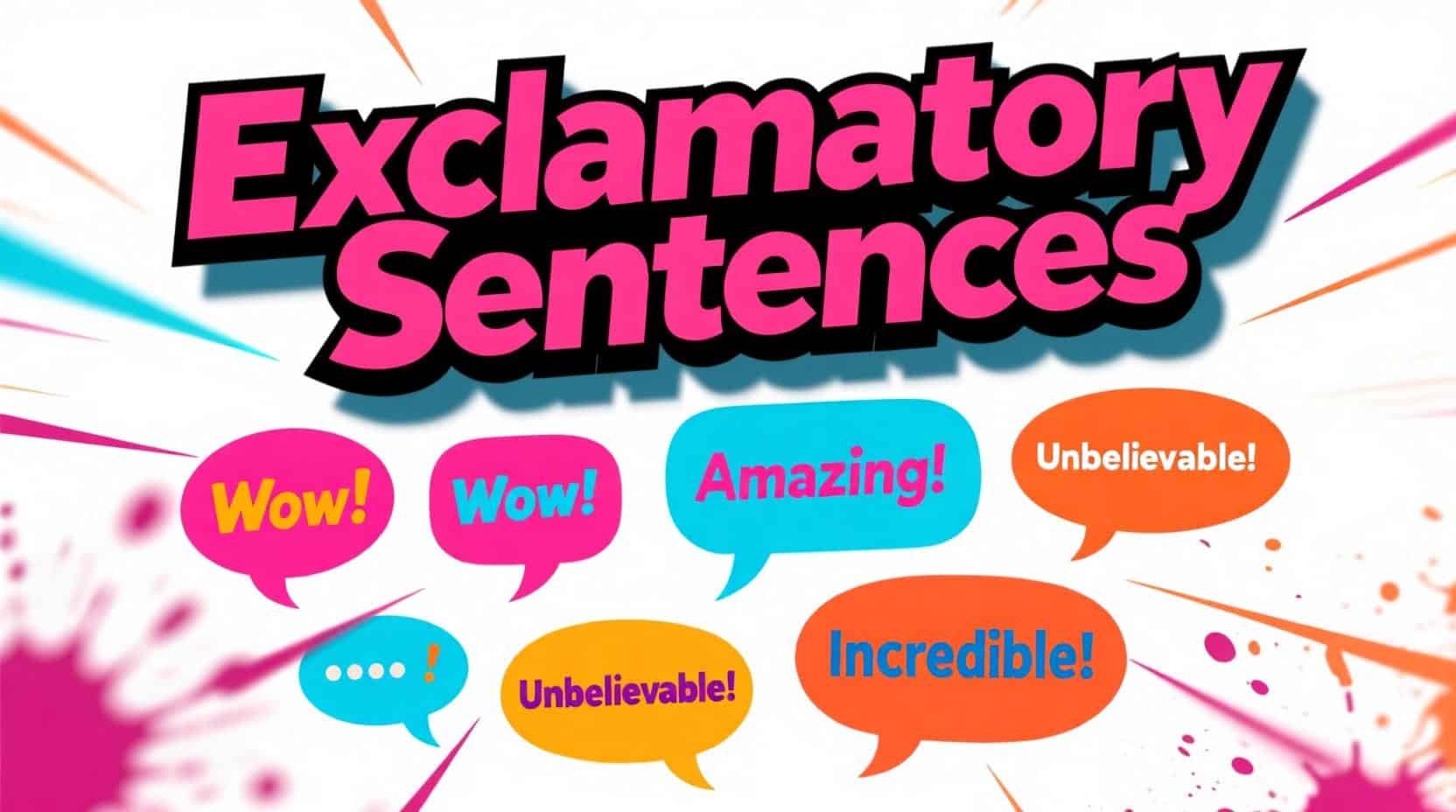An exclamatory sentence is one that expresses strong emotion or excitement. It ends with an exclamation mark (!), making it stand out from regular sentences. Think of it as a way to shout your feelings on paper. Instead of saying, “I’m so happy,” you could say, “I’m thrilled!” The second version feels more alive, doesn’t it?
Exclamatory sentences are like fireworks for your writing. They add energy and grab the reader’s attention. But remember, too many exclamation marks can overwhelm the reader. Use them sparingly for maximum impact.
Why Use Exclamatory Sentences?
Exclamatory sentences help convey emotion effectively. They make your writing lively and engaging. Here are some key reasons to use them:
- Show excitement: “I can’t believe it!”
- Express surprise: “Wow, that’s amazing!”
- Convey urgency: “Watch out!”
- Share joy or frustration: “What a wonderful day!” or “How frustrating!”
By using exclamatory sentences, your writing becomes more expressive, helping the reader feel the emotions behind your words.
How Do Exclamatory Sentences Differ From Other Sentences?
English sentences come in four main types:
- Declarative: These state facts or opinions. Example: “It’s raining outside.”
- Interrogative: These ask questions. Example: “Is it raining outside?”
- Imperative: These give commands. Example: “Close the window.”
- Exclamatory: These express strong emotion. Example: “What a storm it is!”
The key difference is the emotion. Exclamatory sentences are all about passion, excitement, or urgency. They often start with words like “what” or “how,” but not always. Let’s explore some examples to make this clearer.
Examples of Exclamatory Sentences
To help you understand, here are some examples:
- Excitement: “I won the lottery!”
- Happiness: “What a beautiful sunset!”
- Anger: “I can’t believe you did that!”
- Surprise: “You got an A on the test!”
- Urgency: “Hurry up!”
Notice how each sentence conveys a clear, strong feeling. The exclamation mark amplifies the emotion.
How to Write Exclamatory Sentences
Creating exclamatory sentences is simple. Here’s a step-by-step guide:
- Start with emotion: Decide what feeling you want to express. Is it joy, surprise, anger, or urgency?
- Choose your words: Use descriptive language that reflects the intensity of your emotion. For example, instead of “good,” use “fantastic.”
- Add an exclamation mark: This punctuation is non-negotiable. It’s what turns a regular sentence into an exclamatory one.
For instance:
- Regular: “The cake tastes good.”
- Exclamatory: “The cake tastes amazing!”
Common Mistakes to Avoid
While exclamatory sentences are exciting, there are a few pitfalls to watch out for:
- Overusing exclamation marks: Too many can make your writing look unprofessional. For example:
- Overuse: “I love this! It’s so great! Wow! Amazing!”
- Better: “I love this! It’s amazing.”
- Using exclamation marks inappropriately: Don’t use them for declarative or interrogative sentences. For example:
- Incorrect: “Is it raining!”
- Correct: “Is it raining?”
- Lack of emotion: If the sentence doesn’t convey strong feeling, don’t add an exclamation mark.
Fun Facts About Exclamatory Sentences
Here are some interesting tidbits to keep you entertained:
- The exclamation mark (!) is also called a “bang” in typography.
- It has been used in writing since the 15th century.
- In texting, multiple exclamation marks are often used to show extreme excitement (e.g., “I’m so happy!!!”).
Did you know that in Spanish, exclamatory sentences begin with an upside-down exclamation mark (¡)? For example: “¡Qué bonito!”
When to Use Exclamatory Sentences in Everyday Writing
Exclamatory sentences are perfect for:
- Creative writing: Add drama and emotion to stories or poetry.
- Personal messages: Express your excitement in texts or emails. Example: “Can’t wait to see you!”
- Advertising and marketing: Grab attention with emotional appeals. Example: “Don’t miss this amazing offer!”
In formal writing, such as academic papers, it’s better to avoid exclamatory sentences. They can come across as unprofessional.
Practice Makes Perfect
Let’s try turning regular sentences into exclamatory ones:
- Regular: “The movie was good.”
Exclamatory: “The movie was incredible!” - Regular: “I’m so tired.”
Exclamatory: “I’m completely exhausted!” - Regular: “The view is nice.”
Exclamatory: “What an amazing view!”
Give it a try! Think of a sentence and add a punch of emotion to it.
Final Takeaway
Exclamatory sentences are a powerful tool for adding emotion and excitement to your writing. Use them wisely to connect with your readers and keep them engaged. Remember, the exclamation mark is your ally but don’t overdo it.
So, go ahead and spice up your writing. Whether it’s a heartfelt message, a lively story, or a simple note to a friend, exclamatory sentences can make your words pop. Happy writing!



